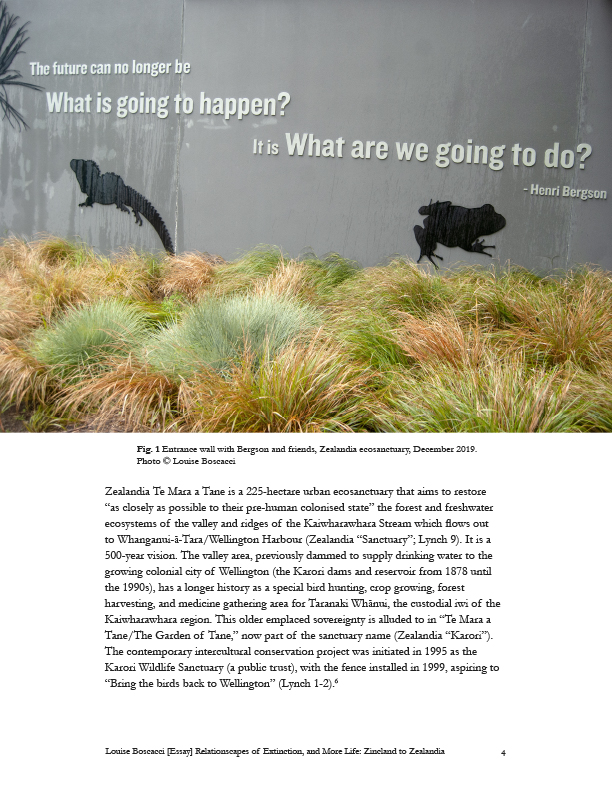Relationscapes of Extinction, and More Life
Zincland to Zealandia
DOI:
https://doi.org/10.60162/swamphen.8.16712Keywords:
art of wit(h)nessing, multinatural, relationscapes, extinction, more life, queer ecology, multispecies recovery, Zealandia, Henri Bergson, Rachel Carson, planetarity, Gayatri Spivak, Anthropocene-in-the-making, vital affectsAbstract
3:20 a.m. Friday, 14 August 2020: Wildes Meadow, the Illawarra highlands, Wodi Wodi First Peoples and Yuin nation Countries, south-eastern Australia. A Boobook is calling. This sonorous guide in refrain, before and after the Ngā Tūtaki – Encounter/s: Agency, Embodiment, Exchange, Ecologies conference in Tāmaki Makaurau, some eight months later. Two days ago, the SARS-CoV-2 lockdown lifted in New South Wales. Only now can you light a match without visceral trepidation. Without a gut return to the climate crisis inferno of the 2019–2020 summer. Anthropocene-in-the-making? Yes. No. These are Viral Bushranger Times. Anything can happen now.
The shadows trace of the Zincland project is one mode of more-than-human wit(h)nessing that I have introduced elsewhere from an ecology and ethos of open field practice where contemporary art and writing converges with the feminist, decolonising environmental humanities and sciences. Following the conference, I had a plan to travel south, to Pōneke/Wellington and Ōtepoti/Dunedin, to continue a linked project of engaging with naturecultures of extinction, to wit(h)ness two sites of multispecies recovery and ecological restoration. If Zincland took me to Aotearoa, I had no inkling of what I might encounter in this onward momentum of and from the shadows trace. So, let me take you there. Let me pick up this passage of wit(h)nessing and translation one day after leaving Tāmaki Makaurau.

Downloads
Published
Issue
Section
License
Authors who publish with this journal agree to the following terms:- Authors retain copyright and grant the journal right of first publication with the work simultaneously licensed under a Creative Commons Attribution License that allows others to share the work with an acknowledgement of the work's authorship and initial publication in this journal.
- Authors are able to enter into separate, additional contractual arrangements for the non-exclusive distribution of the journal's published version of the work (e.g., post it to an institutional repository or publish it in a book), with an acknowledgement of its initial publication in this journal.
- Authors are permitted and encouraged to post their work online (e.g., in institutional repositories or on their website) prior to and during the submission process, as it can lead to productive exchanges, as well as earlier and greater citation of published work (See The Effect of Open Access).
